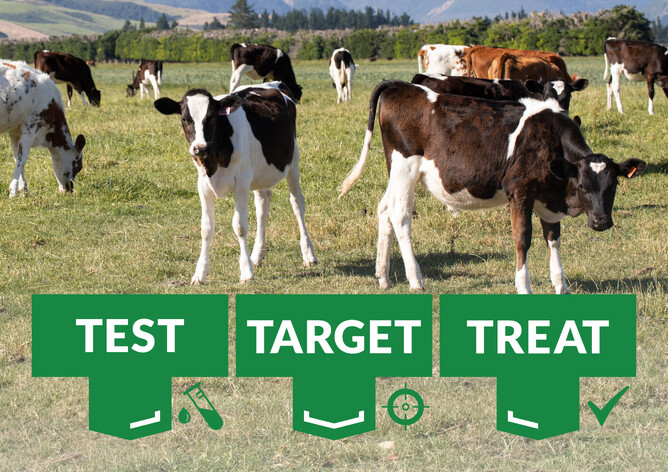Congratulations to everyone who has reared dairy or beef calves this season – you’ve got grit! Now it’s time to make sure you get the most out of your hard work.
Once calves start eating grass and consuming less milk or meal, they’ll also start picking up parasites – and this will begin to impact them.
Traditionally, drenches have been our go-to tool for parasite control. However, we’re increasingly concerned that drenches are becoming less effective, so we’re encouraging farmers to check their effectiveness and use other management tools as part of a broader parasite control plan.
On some farms, this can be as simple as putting young calves in a different paddock from the one used last season. It’s the constant grazing of calves in the same area that causes problems. While it may be trickier on other farms, there are still steps you can take to reduce parasite exposure.
How will you know when drenching is required?
Calves may start to take on a ‘pear shape’ when viewed from the front if they are burdened with worms, but the only way to know for sure is to test.
We can do a quick faecal egg count (FEC) test for you. Bring in 10 fresh individual poo samples (use ziplock bags or grab a free kit from our clinics) and find out if drenching is needed. If you do drench, we can also check if it’s been effective. By testing we can target the appropriate treatment.
Let’s maximise the effort you’ve put in and ensure they keep growing well. To learn more about effective drenching and parasite management strategies for calves, talk to your KeyVet.
For more information, check out the Beef + Lamb New Zealand Wormwise programme resources around this topic: https://beeflambnz.com/news/when-should-i-start-drenching-calves-im-rearing?

